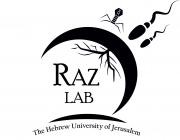Citation:
Abstract:
BACKGROUND: Induction of multiple ovulations, or superovulation, may potentially increase the efficiency of equine embryo transfer programs. Our objective was to investigate the effects of equine follicle-stimulating hormone (eFSH) treatment on the success rate of embryo transfer programs in mares.
METHODS: In the research facility of the University of Saskatchewan, Canada, we studied 12 donor mares and 37 recipient mares during the physiological breeding season. Donor mares were used in two consecutive oestrous cycles: the first served as the control cycle and in the second an eFSH regimen was applied (eFSH cycle). In the control cycle, mares were administered human chorionic gonadotropin (hCG) to induce ovulation when a follicle ≥35 mm in diameter was detected by transrectal ultrasonographic examination. In the second oestrous cycle, twice-daily eFSH treatment was initiated when a follicle ≥25 mm was detected and treatment ceased when a follicle ≥35 mm was present, at which time hCG was administered. All donor mares were artificially inseminated while in oestrus using fresh semen collected from a stallion of proven fertility. At 8 days post-ovulation, embryos were recovered transcervically and transferred individually to the uterus of a synchronised recipient mare.
RESULTS: The eFSH treatment stimulated the ovary and resulted in greater numbers of ovulations and recovered embryos; however the recovered embryos tended to have a lower morphological grade than the control embryos, and the recipient pregnancy rate per transferred embryo was lower than anticipated.
CONCLUSION: The numbers of recipient pregnancies and foals born that resulted from eFSH treatment were not different from the control.

